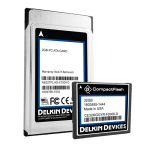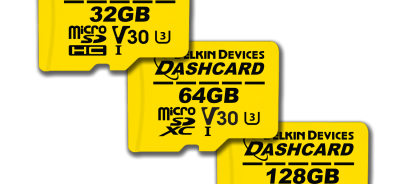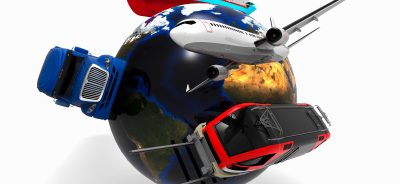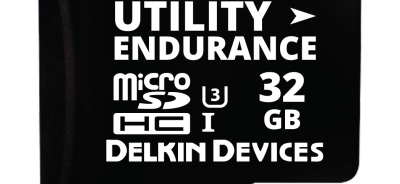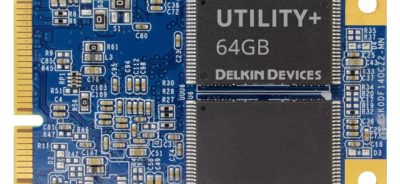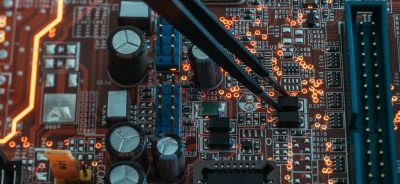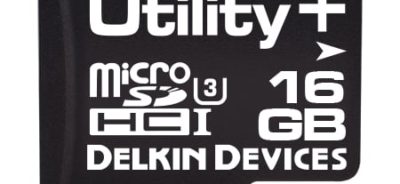Anatomy of Industrial Grade Solid State Storage
General
This article will describe the make-up of NAND Flash based Industrial Grade Solid State Storage devices with focus on disk drives and Compact Flash (CF) cards.
Why Industrial Grade?
For applications such as aerospace solutions, heavy factory robotics, remote telecommunication installations, medical equipment, and automotive applications like tractor-trailer management systems, industrial grade storage is required.
Devices for these applications must be designed with reliability, quality, performance, security and longevity in mind. All this in wide ambient temperature and humidity environment. In addition, they must operate over faintly wide voltage ranges and must be immune to electrical noise and physical contaminants.
Not such an easy task, hence the higher cost of such devices compared to their commercial counterparts.
General Industrial Grade Product Specifications
At a minimum, any Industrial grade product must function without service affecting failures in the following environment:
- Ambient Temperature: -40ºC to +85ºC
- Humidity: 95% Non-Condensing
- Power Supply Tolerance: +-10%
Notice these are ambient conditions. That is, the temperature and humidity that surrounds the system as a whole. For example, a disk drive or CF card inside a system cabinet.
Using components with these ratings won’t necessarily guarantee a working system at the limits. It should be intuitive, that if the PC board holding these components is placed in an enclosure, there will be a temperature rise inside the enclosure that can be significant, especially in cases where high power dissipation components are used with little or no air flow or heat sinking. Extreme care and attention to detail is required when designing such systems.
Industrial Grade Storage Specifications
At a minimum, an Industrial Grade SSD must meet the above product specifications. But most applications for these storage devices require enhancements above and beyond these physical requirements.
Industrial Grade SSD Enhancements
Industrial grade devices will likely have:
- Very low bit error rates: Uncorrectable bit error rate <1 sector per 1016 bits read.
- Many very critical applications require a RAID configuration, using multiple drives typically a RAID 10 mode.
- Encryption: Hardware-based AES-256 encryption – All data to the Flash is Encrypted, Including Firmware.
- Hot-plug/hot-remove capable.
- Device extreme low-power mode.
- ATA security feature command set and password login support.
- Secure erase command set.
- Sanitize command set.
- ATA-8 ACS3 command set compliant.
- All DMA modes and PIO modes.
- For SATA devices– SATA 6 compliant. Native Command Queuing.
- Self-monitoring, analysis, and reporting technology (SMART) command set. This is a very critical requirement for remote applications.
- Redundancy and Secure Firmware updates
- High IOPS and MB/S throughput.
- Data loss protection from power down during writes.
How does one support the high speed and low bit error rate requirements?
To meet the high IOPS and MB/S requirements, the Flash Translation Layer (FTL) of the controller, both Hardware and Firmware, are critical.
A high degree of parallelism, using Multiple Flash Channels, and Interleaving between flash devices in each channel, as well as interleaving within the planes in each Flash device, are ways of accomplishing speed.
The Hardware can also use Direct Memory and Direct Flash access to off load the CPU and thus increase speed.
Write Amplification greatly affects IOPS (Input Outputs per Second). Block based Mapping has the poorest Write Amplification, due to the frequent required erases. This affects Random write and IOPS performance.
With the shrinking geometry process for flash devices the Error Correction (ECC) is critical. Upwards of 70 bits of correction in a double sector is not uncommon. The error correction code chosen is critical. The BCH algorithm is by far the best ECC. Using this plus a CRC over a double sector is very effective. The overhead for this algorithm is 13 bits of overhead for each bit of correction desired.
This uses a lot space in the page spare area. Flash manufactures are aware of this and include enough space to contain the protection overhead.
For extremely critical applications, the use of SLC or PSUEDO SLC (based on MLC) is probably warranted. The use of 3D TLC Flash is another consideration.
Conclusion
Each Industrial application is unique as far as requirements are concerned. At a minimum, the environmental/ambient conditions must be met. This alone is not as simple as it seems. The reliability (MTBF) requirements are also stringent. So, the right choice of flash controller and supporting components is critical. PCBs are also critical and often conformal coating is required. Add to this enclosure design, and one can understand the high process of such drives, compared to their commercial counter parts.
Contact
Article Contributor:
Carmine C. Cupani, MSEE
CTech Electronics LLC
 Login
Login Register
Register


